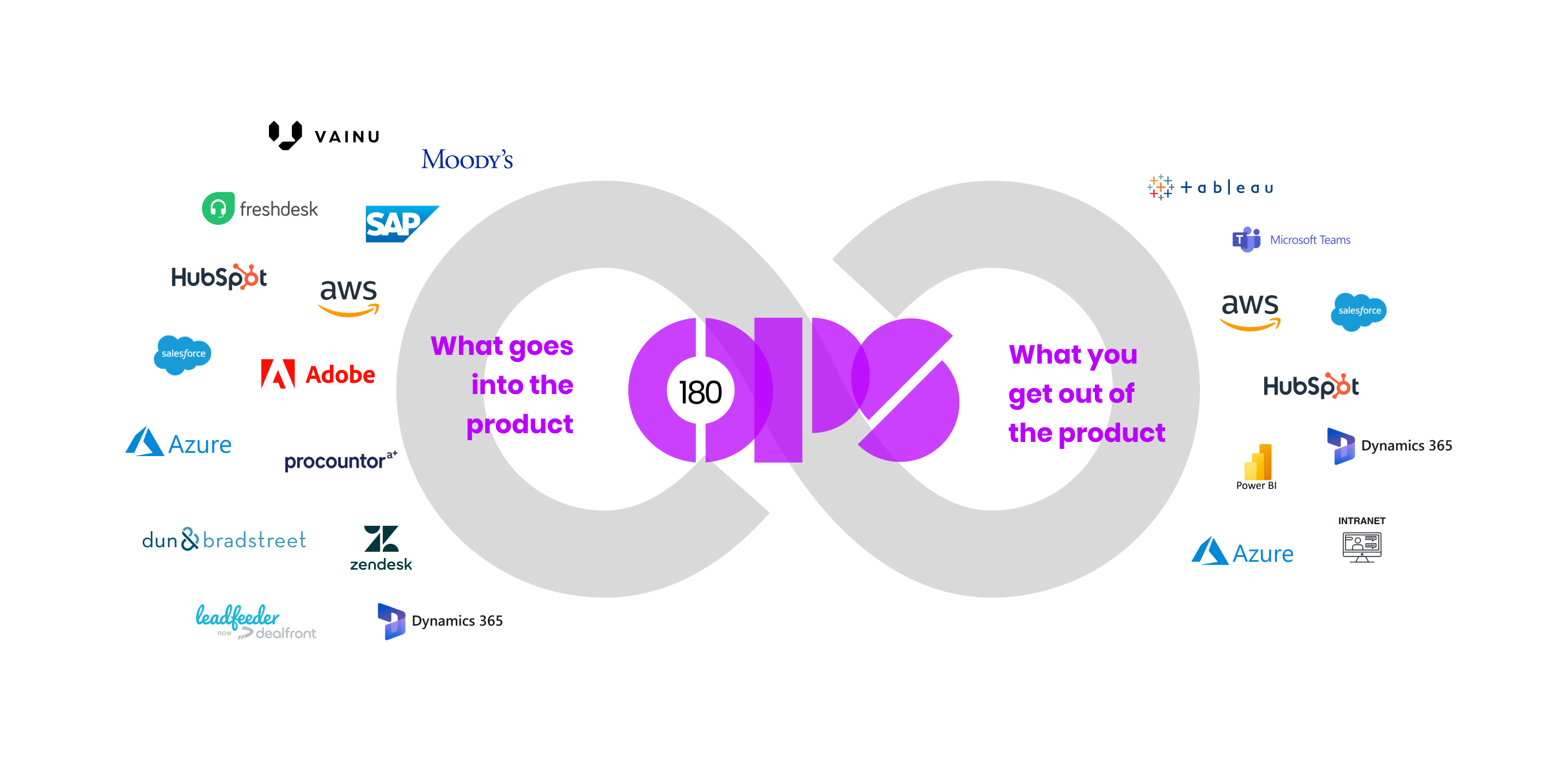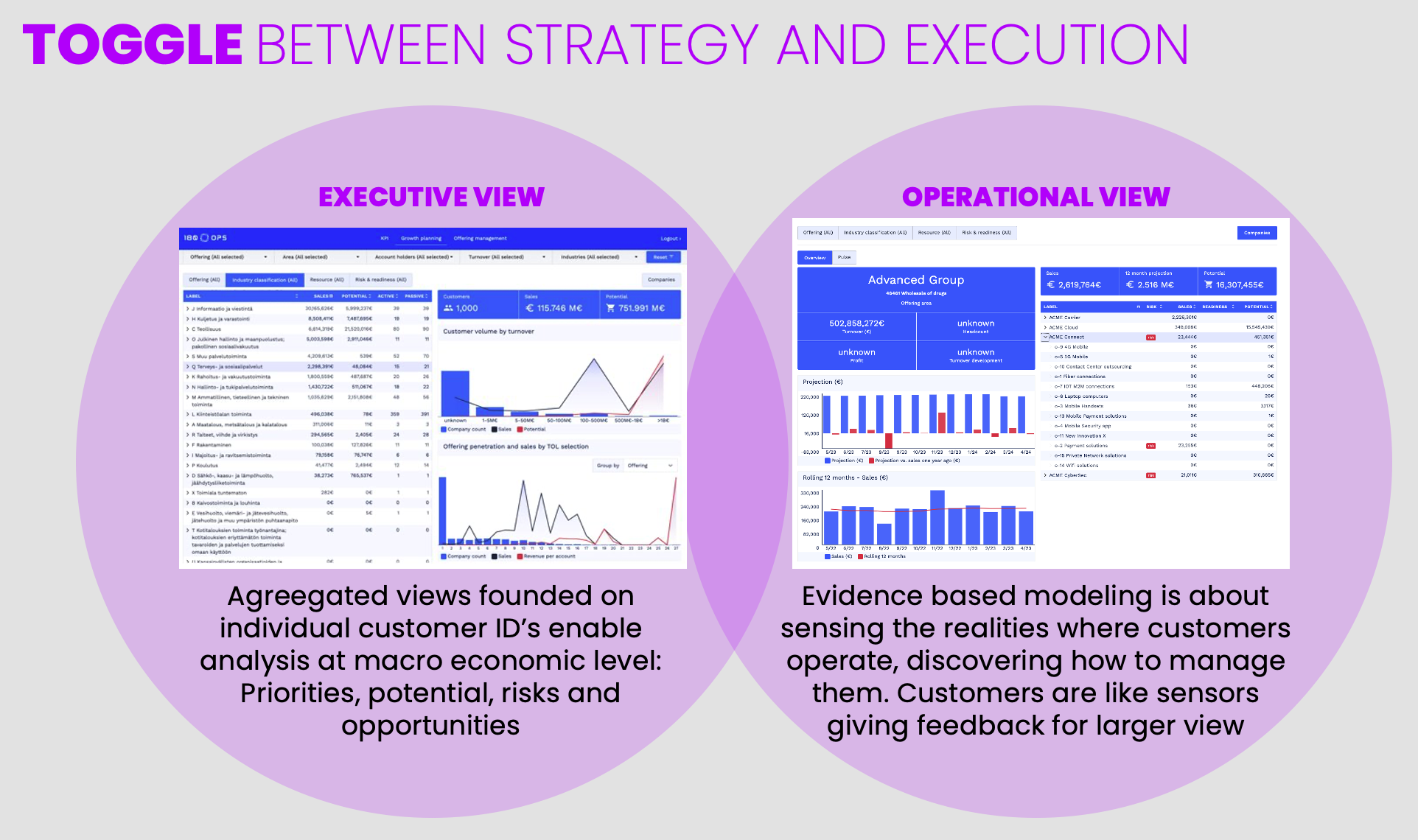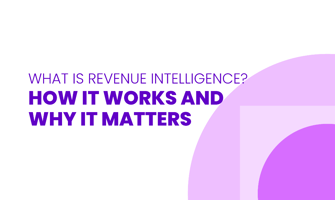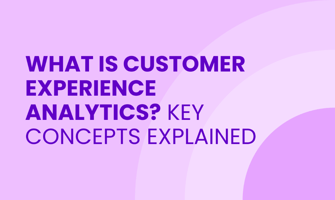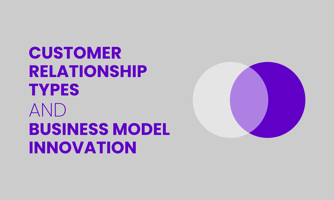Revenue intelligence is a critical process that helps businesses understand, predict, and optimize...
Webinar summary: Boost your productivity with RevOps
In our webinar about how to boost your productivity with revenue operations (RevOps), we focused on finding answers to three key questions. You can read the answers below and see the full webinar recording.
the main takeaways are:
- Leadership can motivate salespeople to succeed by: giving them direction. Provide answers to where the potential is, and what to sell to whom, when and why.
- To optimise your sales team's productivity and focus: make sure to release time for selling, improve accuracy and customer understanding, give confidence and motivation with evidence-based analytics.
- Only 1/4 of salespeople's time is used in sales. To increase that number we need automatic reporting, AI tools for account planning and delivery of timely advice. We could also call this the 6th sense with AI.
WEBINAR CONTENT AS AN ARTICLE
what is revenue operations really?
RevOps is fundamentally about customer and market centric management and operational transformation. The fundamental idea is to bring customer interface functions: Sales, Marketing and Customer Success together and create collaborative operating model that gives clear roles and responsibilities as well as synergies via automation and improved customer experience. In order to enable and accelerate this change, the data and tools need to be re-considered. All function specific data needs to be pulled together and enable one source of truth for the management and operational execution. Strategic reasons why this change is happening relate to business reasons:
- Productivity imperative: Companies can't afford to hire more people and increase fixed costs, which means that more needs to be gained with what the company already has.
- Customer centricity imperative: Companies need to improve their retention, shield their business from risks and VUCA reality. Customer centricity is finally moving from manifestos and keynote speaches to operational reality. Customer Centricity has both attraction and retention perspectives to it.
- Innovation imperative: Companies need to constantly stay tuned with the customers' changing needs and situations and improve their capability to adapt to market requirements. Continuous learning and crafting of competitive advantages from customer insights drive stronger role of bottom-up and outside-in perspective.
RevOps is rapidly changing the way how companies are managed. In 2023 Chief Revenue Operations (CRO), Head of Revenue Operations and similar Revenue related titles dominate the LinkedIn data. This movement has its roots in enterprise software and SaaS companies, that have long customer relationships and very competitive markets. They wanted to improve productivity, increase ARPA (Average Revenue Per Account), Penetration and Lifetime value of their customers.
revops lives in customer's journey
The fundamental reason for a company to exist, is to serve customers with products and services so that they can get their jobs-to-be-done ready, to help them succeed and fulfil their needs. All capabilities from offerings to technologies and customer interface functions exist to meet these customer needs and requirements. Customer journey and relationship is the foundation of business, but we don't need to be passively there, when needed, but actively help customers forward towards destinations that we prefer. That is why it is natural, that the customer journey is where Rev Ops operate and influence:
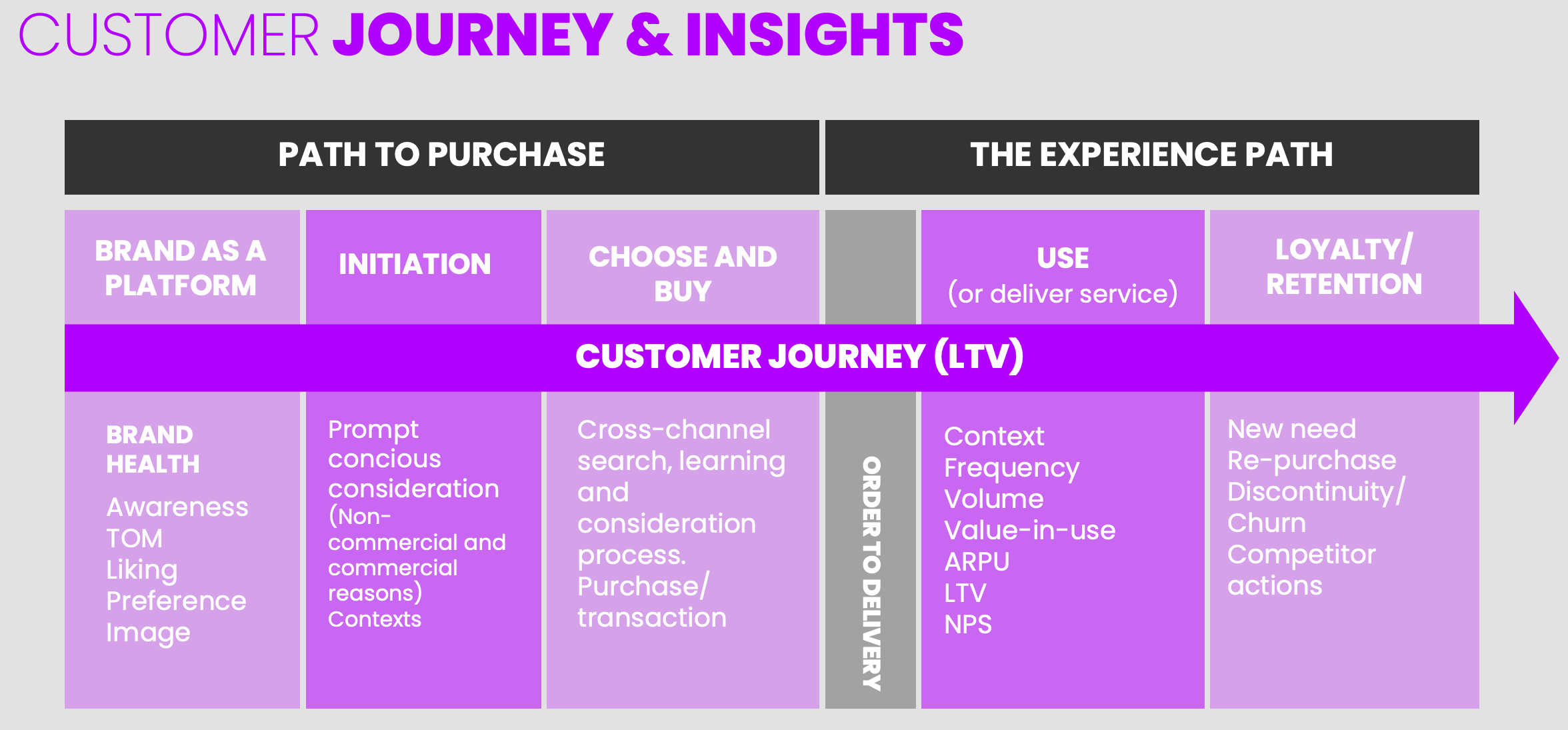
Brand as a Platform: In the Path to Purchase and the beginning of the journey, marketing has a major role. In case the brand has strong awareness and preference, that will dictate most of the path further. This is also the case, in case your competitor's brand is much stronger than your own. Strong brands become anchors in customer's consideration and they move towards them by default. Other brand have the burden of proof and they need to get the customer's attention actively if they want to steer the customer away from the preferred path. Learn more about market dynamics mapping approach here
Naturally the brand's reputation and previous experiences play major role in this game. It is completely different journey to cross-sell existing customer something new compared to acquiring a completely new customer. Customer relationship types represent an incredibly interesting innovation space that has recently disrupted and changed business models in multitude of sectors. See more "Customer Relationship Type and Business Model Innovation" article.
Initiation stage represent a moment when customer moves from addressable market to obtainable market or active markets. In most customer journey studies I have been able to discover changes in customer's situation or operating environment, that prompt the customer to look for new solutions. Recognizing these moments is a major asset, because it enables you to act intelligently and with high relevance even if the customer hasn't yet realized that they need help or there is a solution to their situation. Naturally, this can also be actively created with a sales contact or marketing activities. Recognizing the most effective ways of getting customer's attention and interest has strong impact on productivity and ROI.
Choosing and buying stage is about customer's active consideration, learning and comparison process across variety of content and reference sources and channels. In B2B it is also different people doing the learning and comparing than those making decisions. Very often, especially in high intensity decision making (High investment, high interest, high impact) the length and thoroughness of comparison can last months or years in some cases. Understanding the dynamics and setting expectations and practices accordingly is very important. Learn more about Different types of Funnels here
Customer relationship is about order to delivery, using the products or experiencing the service, loyalty and retention. The first purchase represent only a tip of the iceberg in most customer relationships. The customer has said yes and entered into new relationship with you. Now, it is up to the company to help the customer to realise in how many ways they can help the customer succeed. This is where most companies fail. Selling something is NOT an end to something, it is the BEGINNING for potentially beautiful collaboration. Expanding the relationship is very effective way of improving ARPA, Lifetimevalue and Retention.
According Forbes study, in average 60% of annual revenue comes from existing customers and improving retention even a little bit has dramatic impacts on profitability. It is always more expensive to acquire new accounts than it is to keep and grow existing ones. However, the company can never seize to hunt for new customers. The empirical data about "double hazard" model shows, how losing your traction in new customer acquisition start eroding your existing customer base also. That means double hit to your revenue and profitability.
It is good to realize, that very often customer base analysis looks a lot like this. Blue bar = number of customers, Black line = total 12m revenue, Red Line = ARPA
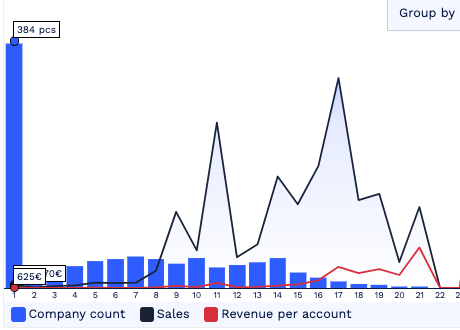
Majority of customers only buy one offering and their total share of revenue is small. On the other hand there are customers buying much wider portfolio, they are few but they represent majority of the turnover. These customers are sold full, so they can't grow, but they set an example and a success story to the majority of customer base, who only buy one or two offerings.
ONE JOURNEY - ONE PRACTICE
While customers are only having one customer journey and customer relationship, they connect all their experiences with the company to this single experience. That's why it is quite natural, that the collaboration between sales, marketing and customer success is imperative. Company needs to design customer relationships and journeys with understanding to proactive and reactive engagements with the customer. Company should also have an idea about the destination, what kind of relationship we are guiding the customer towards.
While majority of companies internal dashboards and tools concentrate on some internal object: Company financials, business unit, offering, channel, salesteam, sales person, it is all inside-data. The challenge with this is, that you can see changes from the data, but no explanation for it. That is why 180ops concentrate on analyzing and modeling individual business IDs, the customers. Each customer is like a sensor in the market, which has 1) existing relationship, 2) developments in the company (grow, decline, hire, layoffs, M&A, new branches...) and 3) Macro Economic environment in which the customers operate in. For us, Customer Centricity means, that we put the customer to the center or everything. By aggregating this data and analyzing it with AI and Machine Learning tools, we get to create view towards key insights: Where are the potential and priorities, risks and opportunities? At individual customer level it looks like this:
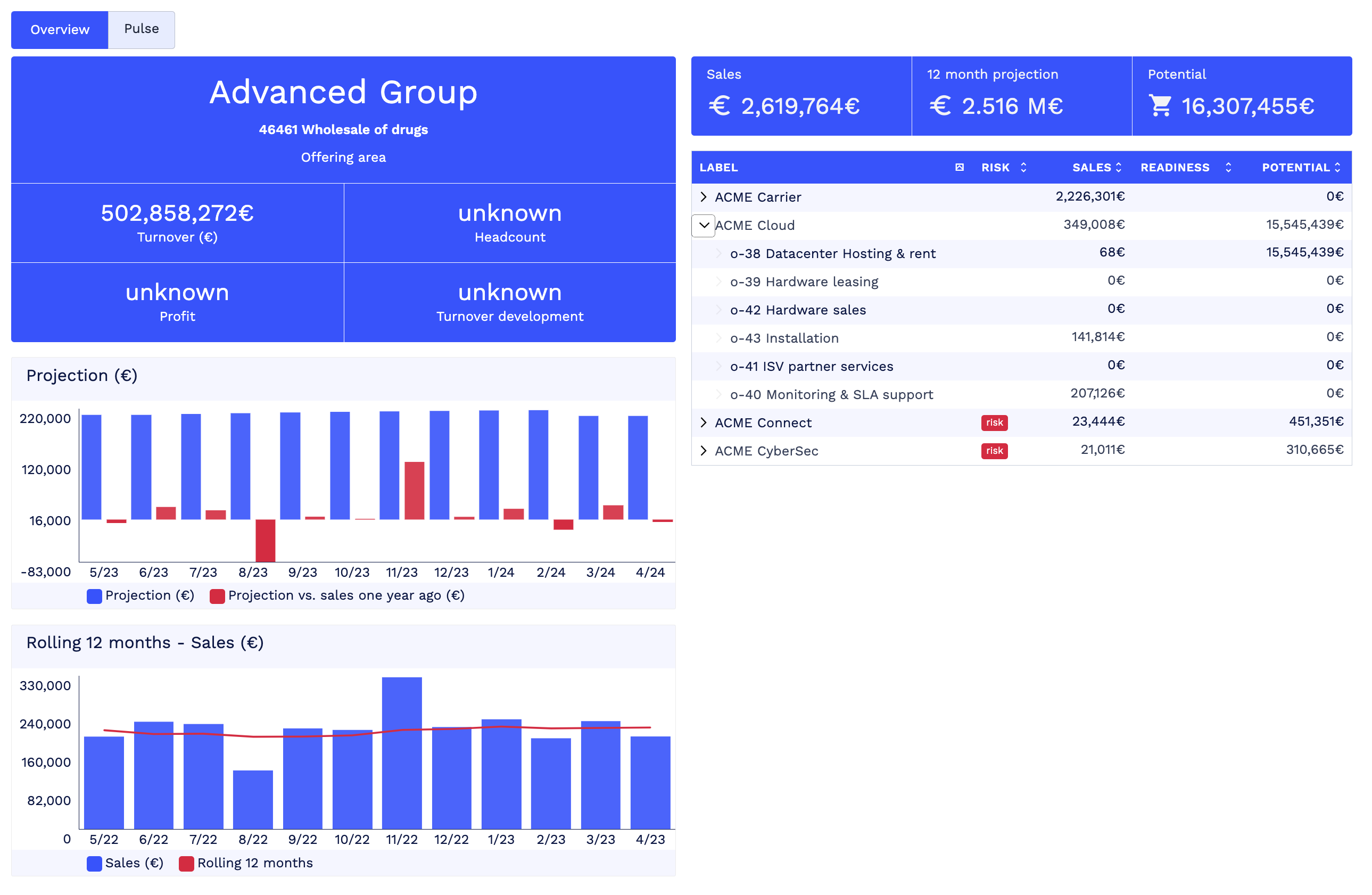
The pragmatic use case for this view is to determine next activities and account planning. The offering view reveals where the revenue currently comes from and where the potential for growth is evident. Risk and Readiness show urgency for activity and the pulse-view dives deeper into the reasons why there is a higher risk or readiness (likelihood of buying).
Having these views at your disposal gives you insights about customer's journey at individual offering level:
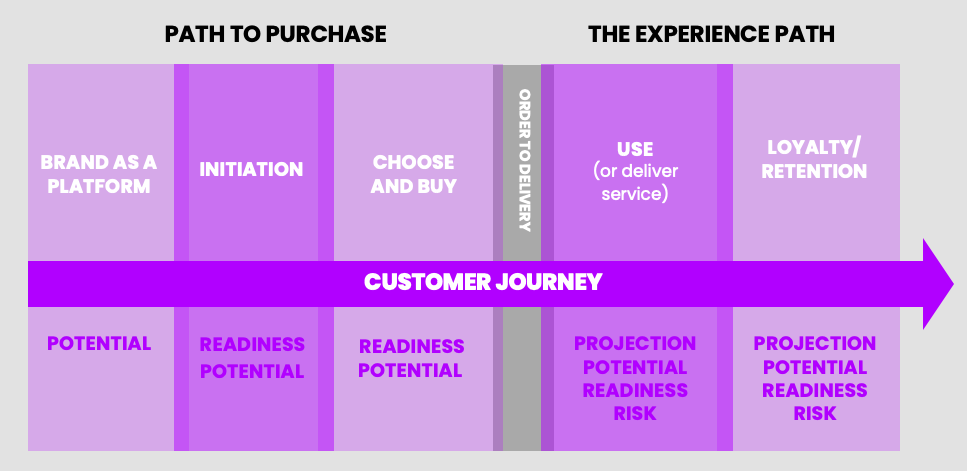
management perspective
The goal of this technology is to create a bridge between management decision making and operational execution. The requirement for RevOps to operate in sync, is to bring the data together and define roles and responsibilities across processes. However, it is even better, if this doesn't just stop at sales, marcom and customer success, but also extend to other management team members. Having the facts and evidence based view of the situation gives answers and shared perspective across company's operations.
180ops Key features:
1. Analysis UX and making sense of data: Capability to approach the markets by business units, divisions or offerings, standard industry classification, geo location, team, segment, company size. Direct capability to dive into market data from macro level to individual business IDs: Active and passive customers, hunting (new customer acquisition) targets. Depending on the user, this UX serves management, sales, marketing, portfolio management and customer success as well as CFO creating shared language and understanding across disciplines and stake holders.
2. Potential: AI & Machine Learning based approach to define at offering level, what is the sales potential for individual business IDs in monetary terms (Ideal offering profile by business ID). Market view and analysis in aggregate format. The foundation for this modelling is based on billing history instead of CRM, which gives much more reliable view to developments over time.
3. Projection: 12 month billing forecast at monthly level by individual customer IDs and aggregated as market view
4. Risk: Propability of customer relationship defect. Risk level indicator as well as contributing factors > why is it likely that the customer will churn, risk increasing and mitigating factors
5. Readiness: Indication for customers move from addressable market to obtainable market or active consideration. Readiness level indicator as well as contributing factors > why is it likely that the customer will buy certain offering, Readiness increasing and hindering factors
6. Penetration & ARPA (Average Revenue Per Account): The technology has been developed with an idea to optimize customer's Lifetime value and turn the company's full capabilities to revenue (ARPA). RevOps tools often concentrate on pipeline or dialogue, 180ops has wider scope and creates a bridge between strategic planning and operational execution. An excellent tool for the creation of Strategic Segmentation.
7. API first technology: Although 180ops UX has been built for purpose of easy access and making sense of data, the data is also needed in customer's other systems for operational steering, triggers and reporting. Eg. the individual customer reports are integrated with CRM, so that the sales and customer service people get the relevant information from the tools that they are already using (eg. Salesforce, Dynamics, HubSpot).
This approach is capable of helping both organisation and other technologies to operate in sync. 180ops is targeted for midcap and large B2B companies. Minimum requirement is that the company must have hundreds of customers, but preferrably thousands or tens of thousands. Companies that have wide offering range and diversity in the types of customers benefit from the technology most. If they also have history in M&A, divisions, subsidiaries or business groups, they certainly have difficulties in making sense of the data and surrounding markets. VUCA environment makes 180ops more valuable and we can help turn complexity into competitive advantages, priorities and opportunities.
